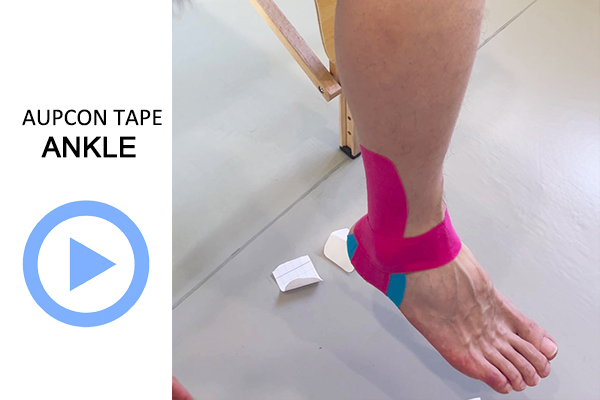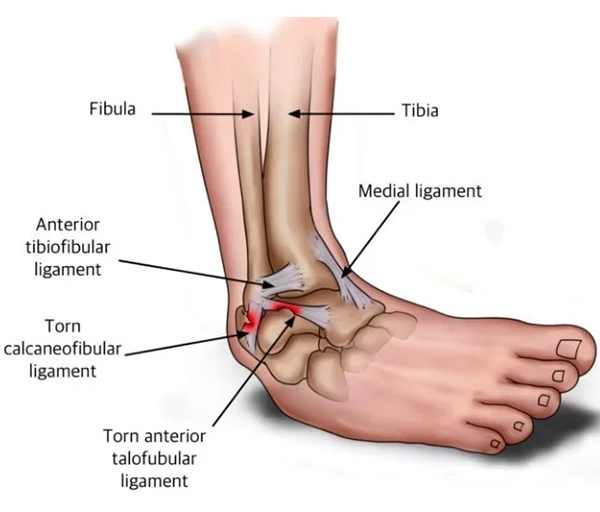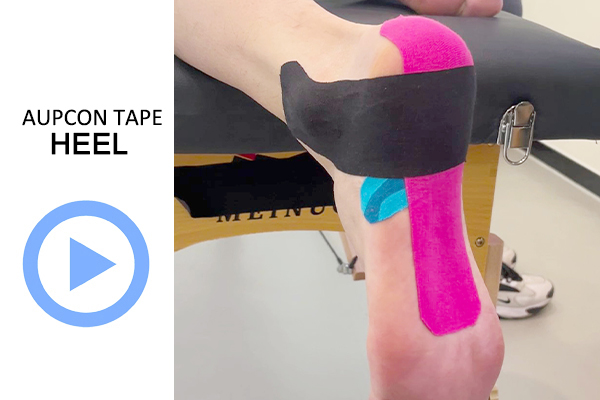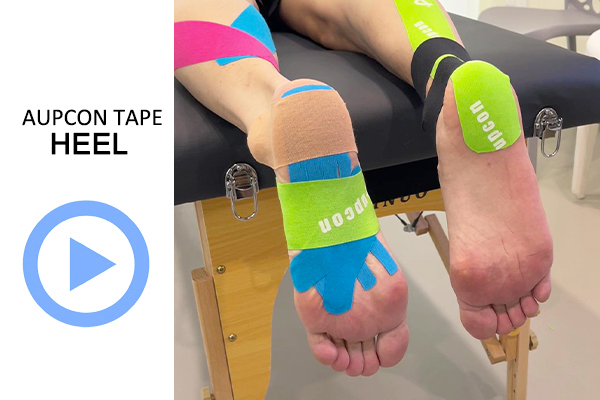¿Cómo utilizar cinta kinesiológica para un esguince de tobillo lateral?
Esguince de tobillo lateral
Un esguince de tobillo lateral es una lesión deportiva común, generalmente causada por torceduras o estiramientos del tobillo. Esta lesión puede dañar los músculos, ligamentos y nervios que rodean el tobillo, causando dolor, inflamación y pérdida de movimiento. Sigue este artículo para aprender a usar el esguince de tobillo lateral. cinta de kinesiología para ayudar a tratar, estabilizar y aliviar el dolor.
Para obtener el Cintas Aupcon mencionado en el contenido: cinta de kinesiología de algodón, cinta de kinesiología sintética, cinta de kinesiología de nailon, cinta de kinesiología precortada, cinta de kinesiología perforada, tiras de cinta kinesiológica, etc., haga clic para saltar a nuestro kinesiology tape página de producto para la compra al por mayor.
Cinta de kinesiología CONSEJOS DE CINTA
- Limpie su piel antes de usar para prolongar la vida útil de la cinta kinesiológica del tobillo.
- Para garantizar un ajuste seguro, corte las cuatro esquinas con tijeras para cinta kinesiológica para evitar que se caigan.
- No toque la superficie adhesiva al aplicar la cinta para evitar afectar la adherencia.
- Después de aplicarlo, frote la cinta kinesiológica del tobillo varias veces para que se adhiera.
- Evite el uso prolongado y reemplácelo dentro de 3 a 7 días.
- No aplicar en la zona si hay una herida abierta en los pies.
¿Cómo utilizar cinta kinesiológica para un esguince de tobillo lateral?
Fije la primera cinta kinesiológica para esguince de tobillo lateral en forma de I al tobillo externo y estírela 50% hacia abajo para que se ajuste perfectamente.
De manera similar, estire y ajuste la segunda cinta kinesiológica del tobillo en forma de I sobre el tobillo lateral.
Continúe aplicando la tercera cinta kinesiológica en forma de I en la parte externa del tobillo.
Pegue las tres cintas kinesiológicas para esguince de tobillo lateral tipo I como se muestra en la figura.
Luego elige una cinta kinesiológica para esguince de tobillo lateral en forma de I más larga para fijarla en la planta del pie y estirarla hacia afuera 75%.
Aplique cinta para músculo de tobillo estirada al 75% por ciento en la parte exterior del tobillo.
Estire la mitad de la última cinta muscular del tobillo en 75% para que se ajuste horizontalmente al tobillo exterior.
¿Qué es una cinta kinesiológica para esguince de tobillo lateral?
Principales beneficios de la cinta muscular del tobillo
- Estabilización del tobillo: el uso de cinta kinesiológica para esguince de tobillo lateral puede proporcionar un soporte lateral del tobillo suave y eficaz, lo que ayuda a reducir la presión física del tobillo y aliviar el dolor.
- Circulación sanguínea mejorada: la cinta kinesiológica para esguince de tobillo lateral puede levantar suavemente el tejido de la piel, mejorando el flujo sanguíneo al área inflamada, promoviendo la curación y aliviando el dolor.
- Reducción de la inflamación: La cinta kinesiológica para esguince de tobillo lateral puede afectar el sistema linfático. La reducción de la inflamación puede aliviar la hinchazón, la rigidez y las molestias del tobillo.
Cinta de kinesiología de algodón
para el esguince de tobillo lateral
→
Cinta kinesiológica para esguince de tobillo lateral
Algodón 95% y spandex 5% + pegamento acrílico japonés
Preguntas frecuentes
Sí, puede ser. Cinta de tobillo Se puede envolver alrededor del tobillo para estabilizar la articulación y prevenir daños persistentes, fortalecer la estabilidad del tobillo y la planta del pie, reducir la presión corporal y promover la recuperación. Es un buen método de tratamiento auxiliar.
Practicar deportes: Los esguinces de tobillo son lesiones deportivas comunes, especialmente en deportes que requieren saltar, cambiar de dirección, girar o torcer el tobillo, como el baloncesto, el tenis, el fútbol americano, el fútbol y las carreras a campo traviesa.
Superficies irregulares: Caminar o correr sobre superficies en mal estado puede aumentar el riesgo de sufrir esguinces de tobillo.
Lesiones de tobillo previas: Una vez que se tuerce el tobillo por primera vez, es fácil lesionarse y volver a torcerse.
Tobillos débiles: Al practicar deportes, la falta de fuerza y flexibilidad en las extremidades inferiores aumenta el riesgo de sufrir esguinces.
Zapatos que no calzan bien: Usar zapatos inadecuados y tacones altos al caminar y practicar deportes puede hacer que sus tobillos sean más susceptibles a sufrir lesiones.
La situación específica varía según la persona. Si el dolor de tobillo es intenso, puede vendarlo con cinta adhesiva durante la noche para reducir el dolor y facilitar el sueño. La cinta para el músculo del tobillo es elástica y se adhiere a la piel, por lo que no estará demasiado apretada ni incómoda. Si se recupera rápidamente y el dolor no es particularmente intenso, puede retirar la cinta cuando corresponda y dejar que se recupere por sí solo durante la noche.
Otras partes del cuerpo
La cinta kinesiológica para esguinces laterales de tobillo puede ayudar a estabilizar y sujetar el tobillo, además de aliviarlo y tratarlo. Sin embargo, existen muchas causas de esguinces de tobillo y los métodos de vendaje también varían. Este artículo solo presenta un método de vendaje. Si desea obtener más información sobre lesiones en el pie, siga nuestros tutoriales y aprenda. Cómo usar la cinta de kinesiología En tu rodillas, hombros, muñecas, tobillos, piernas, etc. Para obtener más tutoriales relacionados, marque nuestro sitio web como favorito y manténgase atento.





